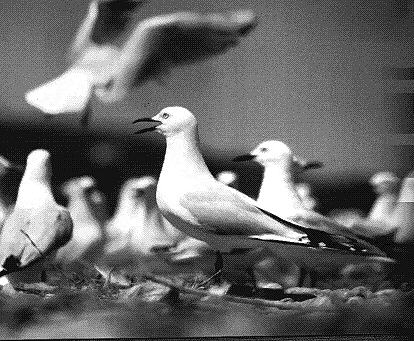
Black-billed Gulls are the most threatened of our gull species. They nest predominantly on gravel river beds or shingle coastline. Black-billed gulls have a somewhat asynchronous breeding season, streching for perhaps 3-4 months from choosing of a site to its abandonment. This increases the chances of predation at the colonies by stoats, rats, ferrets or humans, as well as increasing the chance of flooding at a colony.

About half to three quarters of the world population of Black-billed gulls (they are endemic to New Zealand) nests on the river beds of the Southland region - the 4 major rivers being Waiau, Aparima, Oreti and Mataura. Southland ornithologists are keeping a close eye on these birds. Flights up these rivers in November determine the position of colonies and photographs taken from the plane allow the numbers of birds to be counted with incredible accuracy. From there, ground visits to colonies can be undertaken to band birds or make general observations.
Black-billed gull colonies can range from 50 birds right up to 40 000+. Large colonies occurred frequently in the past but recently there have been very few. Nests measure about 20-30cm in diametre, and are spaced throughout the colony at about 50cm intervals. colonies are noisy places, with all the gulls screeching in an attempt to ward off intruders from their territory.
Black-billed gulls are banded throughout the country. The Southland study has been running for two seasons now. We band juveniles at 2 colonies every season. Each colony has it's own individual colour combination. The gulls banded in Southland can be identified as to their colony and year banded - just by the colours. It seems all the other Black-billed gulls in New Zealand are simply banded with a regional colour. This means observations of Southland gulls in the field have a great importance.

Anyone interested in further information regarding this species should feel free to email me at danja@es.co.nz